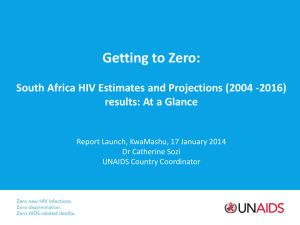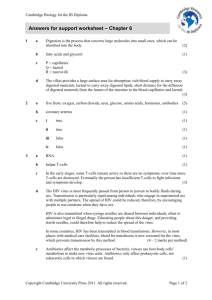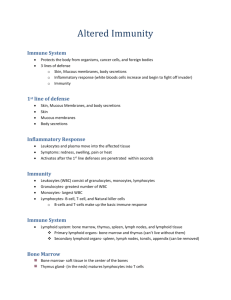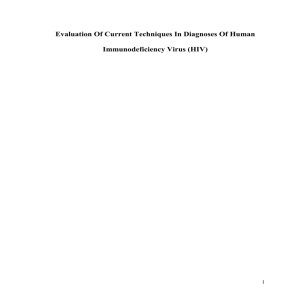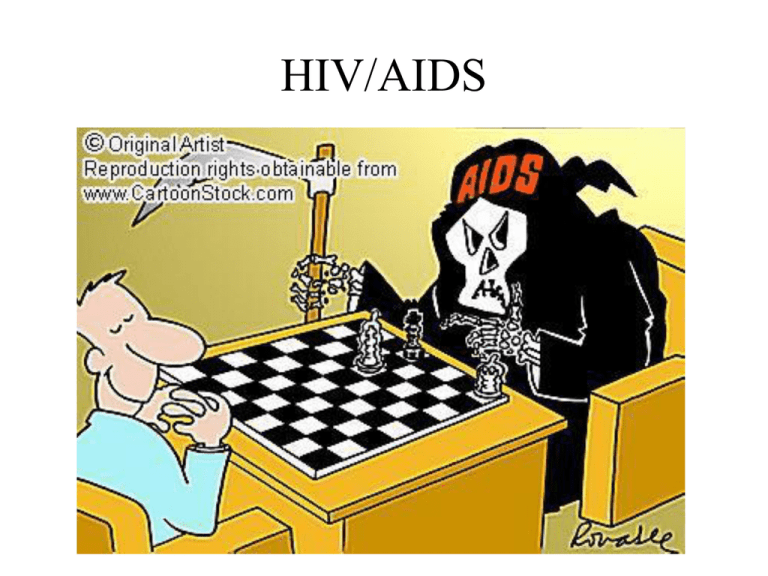
HIV/AIDS
HIV/AIDS Vocabulary
HIV
• Human (only in
humans)
• Immune (fights
infections)
deficiency (lack
something)
• Virus (infection that
cannot be cured)
AIDS
• Acquired (to get or
catch)
• Immune
• Deficiency
• Syndrome
(characteristic of a
certain disease)
OI
• Opportunistic
• Infection
HIV/AIDS
A Brief History
Summer of 1981
• CDC reports the first cases of a rare
pneumonia (PCP) occurring in a small
group of previously healthy young, gay men
in Los Angeles
• CDC reports on the occurrence of a rare
skin cancer (KS) among previously healthy
young, gay men in New York
Pneumonia
Cancer
Naming the disease:
The Gay Cancer…GRID…
1981
• Epidemic A new
disease that is new in
humans, it is growing
very quickly
• Endemic: Common to
a certain population
– The 4 H’s
• Pandemic:Growing
quickly globally.
• In 1982, the CDC
linked HIV to blood.
The 4 H’s
1982
•
•
•
•
Homosexuals
Hemophiliacs
Heroin users
Haitians
1987
• CDC states that HIV is not transmitted
through casual contact
1991:
Magic Johnson
announces that
he’s HIV+
Transmitting HIV
Fluids
Openings
•
•
•
•
•
•
•
•
•
Breast milk
Blood
Semen/ Pre cum
Vaginal fluids
Vagina
Penis
Anus
Mouth
Opening in the skin
The Immune System
• A healthy individual
has approximately
1,200 T-cells
• A T-cell is like a
“soldier cell”. They
go out and attack the
bacteria or virus.
• The immune system
then forms anti-bodies
to protect you.
HIV and the Immune System
• When the HIV virus
attacks the body. The
virus takes over the T-cells
and makes them HIV
factories.
• T-cell count decreases and
the HIV viral load
increases.
• HIV antibodies appear 3
weeks to 6 months after
infection.
• When the individuals Tcell count drops below
200, an AIDS diagnosis is
given.
• Once you are given an
AIDS diagnosis, it does
not change. Regardless of
your T-cell count.
• The virus is the same…the
only thing that has
changed is the number of
T-cells.




